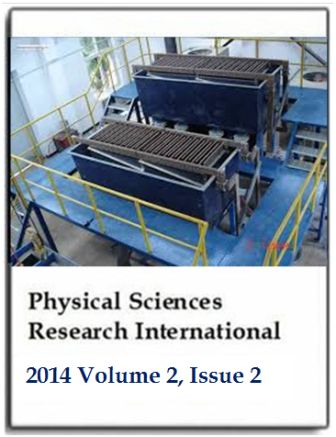Removal of surfactants in wastewater by electrocoagulation method using iron electrodes
S. S. Mahmoud and M. M. AhmedPhysical Sciences Research International
Published: April 25 2014
Volume 2, Issue 2
Pages 28-34
Abstract
The present work aims to study the removal of sodium dodecyl sulphate surfactant from wastewater by electrocoagulation method using iron electrodes. Different series of experiments were carried out to study the effect of each of pH, current density, time of electrolysis, NaCl concentration and initial surfactant dose on removal of surfactant. The experimental results showed that the surfactant in the wastewater was effectively removed by the electrocoagulation process. The obtained results revealed that the optimum operating conditions for the maximum removal of the surfactant were: current density of 1.0 mA/cm2, pH of 6 to 7, time of electrolysis of 10 min, NaCl concentration of 1.5 g/L and initial dose of surfactant of 0 to 150 mg/L. The energy consumption was 0.5 kWh/kg surfactant. Results indicated that the pseudo second order equation is the most suitable model for the system.
Keywords: Electrocoagulation, sodium dodecyl sulphate, iron electrode, wastewater.
Full Text PDF
